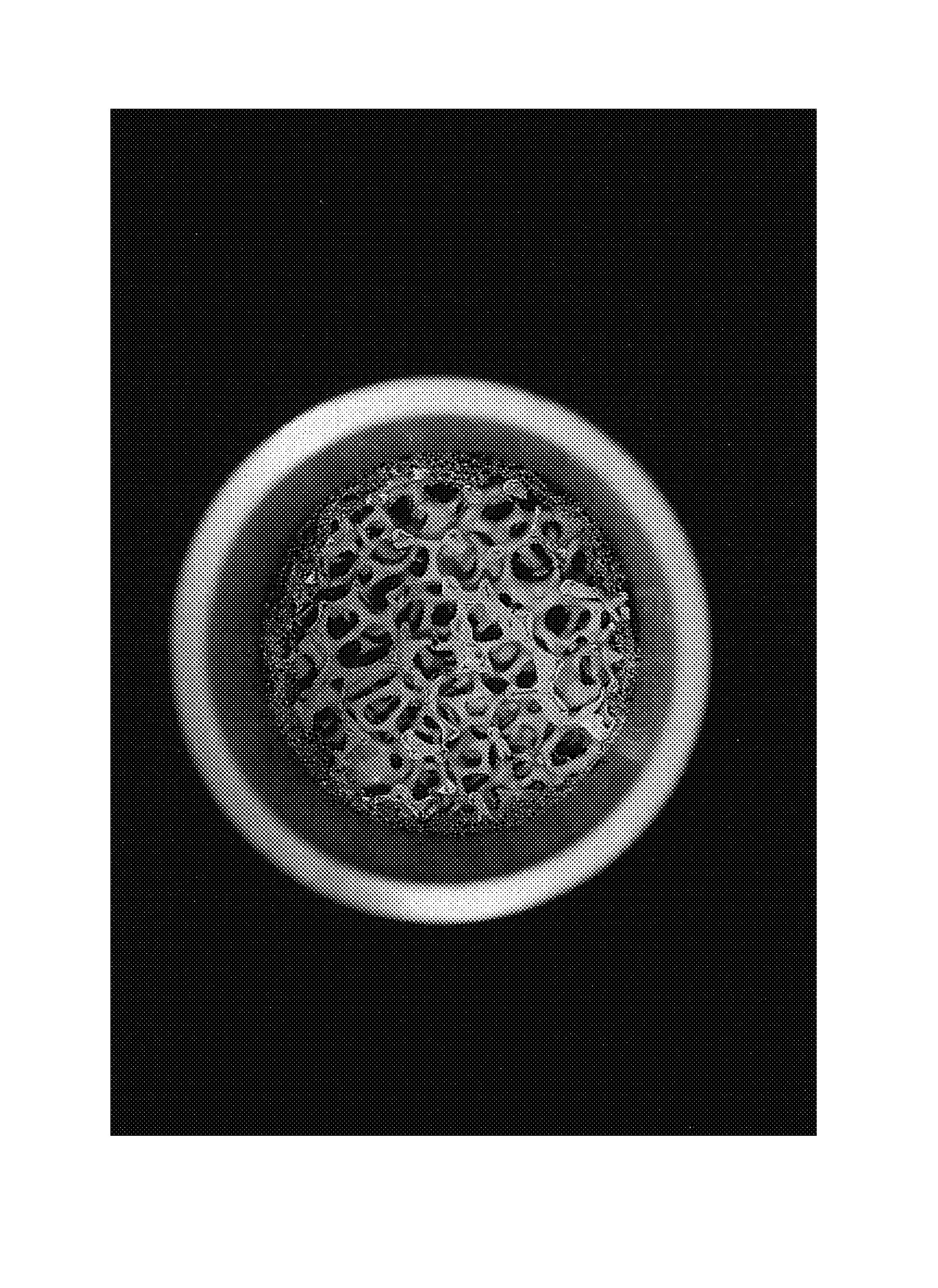Method of making a brazed metal article and the article formed thereby
a metal article and brazing technology, applied in the field of brazing metal articles, can solve the problems of reducing heat transfer efficiency and strength, many gaps between metal foam and metal tubes, volatilization of polymeric foam, etc., and achieves the effects of reducing the number of gaps or spaces associated, increasing the contact point, and facilitating conta
- Summary
- Abstract
- Description
- Claims
- Application Information
AI Technical Summary
Benefits of technology
Problems solved by technology
Method used
Image
Examples
example 1
[0035]A brazed metal article in the form of a nickel-based open-cell metal foam brazed to the interior of a nickel-based superalloy tube by an intermediate nickel-based braze composition was prepared in accordance with the present invention. FIG. 1 is an end view of a brazed metal tube prepared in accordance with the method of Example 1.
[0036]The open-cell metal foam was manufactured according to the following procedure. An open-cell, reticulated polyurethane foam of 10 pores per 25.4 mm (20 pores per inch) designation (Stephenson & Lawyer, Inc.) was used in combination with a nickel-based superalloy (UNS number N06625) slurry composition. The abbreviation UNS stands for Unified Numbering System, which is used to give known metals and metal alloys a number that is recognizable to anyone in the world skilled in the relevant art, e.g., a person skilled in the art seeing the designation N06625 knows that it refers to this particular nickel-based superalloy. The slurry was made by combi...
PUM
| Property | Measurement | Unit |
|---|---|---|
| thickness | aaaaa | aaaaa |
| length | aaaaa | aaaaa |
| diameter | aaaaa | aaaaa |
Abstract
Description
Claims
Application Information
 Login to View More
Login to View More - R&D
- Intellectual Property
- Life Sciences
- Materials
- Tech Scout
- Unparalleled Data Quality
- Higher Quality Content
- 60% Fewer Hallucinations
Browse by: Latest US Patents, China's latest patents, Technical Efficacy Thesaurus, Application Domain, Technology Topic, Popular Technical Reports.
© 2025 PatSnap. All rights reserved.Legal|Privacy policy|Modern Slavery Act Transparency Statement|Sitemap|About US| Contact US: help@patsnap.com


